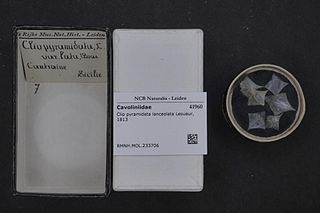
The International Union for Conservation of Nature (IUCN) Red List of Threatened Species, also known as the IUCN Red List or Red Data Book, founded in 1964, is the world's most comprehensive inventory of the global conservation status of biological species. It uses a set of precise criteria to evaluate the extinction risk of thousands of species and subspecies. These criteria are relevant to all species and all regions of the world. With its strong scientific base, the IUCN Red List is recognized as the most authoritative guide to the status of biological diversity. A series of Regional Red Lists are produced by countries or organizations, which assess the risk of extinction to species within a political management unit.

Magnolia fraseri, commonly known as Fraser magnolia, mountain magnolia, earleaf cucumbertree, or mountain-oread, is a species of magnolia native to the south-eastern United States in the southern Appalachian Mountains and adjacent Atlantic and Gulf Coastal Plain from West Virginia south to northern Florida and west to eastern Texas. The Appalachian plants are classified as Magnolia fraseri var. fraseri, and the more coastal plants as M. fraseri var. pyramidata. These two kinds of magnolia are often recognized as distinct species, M. fraseri and M. pyramidata, respectively.

A least-concern species is a species that has been categorized by the International Union for Conservation of Nature (IUCN) as evaluated as not being a focus of species conservation because the specific species is still plentiful in the wild. They do not qualify as threatened, near threatened, or conservation dependent.

An IUCN Red List Critically Endangered species is one that has been categorized by the International Union for Conservation of Nature as facing an extremely high risk of extinction in the wild. As of 2021, of the 120,372 species currently tracked by the IUCN, there are 8,404 species that are considered to be Critically Endangered.
Couratari pyramidata is a species of flowering plant in the family Lecythidaceae. It is endemic to Brazil, where it is limited to the region around Rio de Janeiro.
The excised slitshell, scientific name †Gyrotoma excisa, was a species of freshwater snail, an aquatic gastropod mollusk in the family Pleuroceridae. This species was endemic to the United States. It is now extinct.
Gyrotoma is a genus of extinct freshwater snails with an operculum, aquatic gastropod mollusks in the family Pleuroceridae. This genus was endemic to the USA.
The striate slitshell, scientific name Gyrotoma lewisii, was a species of freshwater snail with a gill and an operculum, an aquatic gastropod mollusk in the family Pleuroceridae. This species was endemic to the United States. It is now extinct.
The pagoda slitshell, scientific name †Gyrotoma pagoda, was a species of freshwater snail, a gastropod in the family Pleuroceridae. This species was endemic to the United States. It is now extinct.
The ribbed slitshell, scientific name Gyrotoma pumila, was a species of freshwater snail with a gill and an operculum, an aquatic gastropod mollusk in the family Pleuroceridae family. This species was endemic to the United States.
The round slitshell, scientific name Gyrotoma walkeri, is an extinct species of freshwater snail, an aquatic gastropod mollusk in the family Pleuroceridae. This species was endemic to the United States.
Tillandsia pyramidata is a species of flowering plant in the family Bromeliaceae. It is native to Bolivia, Venezuela, Colombia, and Ecuador. Two varieties are recognized:
- Tillandsia pyramidata var. pyramidata - Venezuela, Colombia, Ecuador, Peru
- Tillandsia pyramidata var. viviparaRauh - Ecuador and Junín Province of Peru

The World's 25 Most Endangered Primates is a list of highly endangered primate species selected and published by the International Union for Conservation of Nature (IUCN) Species Survival Commission (SSC) Primate Specialist Group (PSG), the International Primatological Society (IPS), Global Wildlife Conservation (GWC), and Bristol Zoological Society (BZS). The IUCN/SSC PSG worked with Conservation International (CI) to start the list in 2000, but in 2002, during the 19th Congress of the International Primatological Society, primatologists reviewed and debated the list, resulting in the 2002–2004 revision and the endorsement of the IPS. The publication was a joint project between the three conservation organizations until the 2012–2014 list when BZS was added as a publisher. The 2018–2020 list was the first time Conservation International was not among the publishers, replaced instead by GWC. The list has been revised every two years following the biannual Congress of the IPS. Starting with the 2004–2006 report, the title changed to "Primates in Peril: The World's 25 Most Endangered Primates". That same year, the list began to provide information about each species, including their conservation status and the threats they face in the wild. The species text is written in collaboration with experts from the field, with 60 people contributing to the 2006–2008 report and 85 people contributing to the 2008–2010 report. The 2004–2006 and 2006–2008 reports were published in the IUCN/SSC PSG journal Primate Conservation,, since then they have been published as independent publications.

Clio pyramidata is a species of sea butterfly, a floating and swimming sea snail, a pelagic marine gastropod mollusk in the family Cliidae.

Trochoidea pyramidata is a species of air-breathing land snail, a terrestrial pulmonate gastropod mollusk in the family Geomitridae, the hairy snails and their allies.

Eudonia gyrotoma is a moth in the family Crambidae. It was described by Edward Meyrick in 1909. This species is endemic to New Zealand.

Filago pyramidata, the broadleaf cottonrose or broad-leaved cudweed, is a European plant species in the sunflower family. It is native to the Mediterranean region of southern Europe, northern Africa, and the Middle East, plus Great Britain, the Low Countries, and Germany. It is also naturalized in scattered locations in North America and Australia, Pakistan, and other places.









